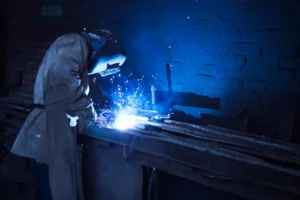Brass, an alloy primarily composed of copper and zinc, has been an essential material in human history for thousands of years. Known for its golden appearance, malleability, and resistance to corrosion, brass is used in a wide array of applications, from musical instruments to plumbing fixtures. In this blog post, we will explore the fascinating journey of brass production, from its raw materials to its diverse applications in the modern world.
The History of Brass
Brass production dates back to ancient times. The earliest brass artifacts, dating back to around 1400 BC, have been discovered in regions such as the Middle East and the Mediterranean. Historically, brass was made by melting copper with calamine (a zinc ore) in the absence of air. This method, known as cementation, was prevalent until the development of modern metallurgical techniques.
Raw Materials: Copper and Zinc
The primary components of brass are copper and zinc, though other elements such as lead, tin, and aluminum can be added to achieve specific properties. Copper is typically extracted from ore deposits through mining, followed by refining processes to produce pure copper. Zinc, on the other hand, is extracted through both mining and recycling processes.
The Production Process
- Melting and Mixing: The production of brass begins with the melting of copper and zinc in a furnace. The precise proportion of copper to zinc can vary depending on the desired properties of the final product. Typically, brass contains between 60-70% copper and 30-40% zinc. The molten metals are thoroughly mixed to ensure a homogeneous alloy.
- Casting: Once the metals are fully melted and mixed, the molten brass is poured into molds to form ingots or billets. These solidified pieces are the starting material for further processing.
- Hot Rolling: The ingots or billets are then heated and passed through a series of rolling mills. This hot rolling process reduces the thickness of the brass, making it easier to work with in subsequent steps.
- Cold Rolling: After hot rolling, the brass undergoes cold rolling, where it is further thinned at room temperature. Cold rolling improves the mechanical properties of brass, enhancing its strength and surface finish.
- Annealing: To relieve the internal stresses and improve ductility, the brass sheets or coils are annealed, a heat treatment process that involves heating the material to a specific temperature and then slowly cooling it.
- Surface Finishing: Finally, the brass is subjected to various surface finishing processes such as polishing, coating, or plating to achieve the desired appearance and corrosion resistance.
Applications of Brass
Brass is renowned for its versatility and is used in numerous industries:
- Musical Instruments: Brass’s acoustic properties make it an ideal material for instruments like trumpets, trombones, and saxophones.
- Plumbing: Brass’s corrosion resistance and malleability are perfect for plumbing fixtures and fittings.
- Machinery: Brass is used in gears, bearings, and other components due to its low friction and durability.
- Decorative Items: Its golden hue makes brass popular in decorative items, jewelry, and architectural elements.
- Electrical Components: Brass’s excellent conductivity makes it suitable for electrical connectors and terminals.
Sustainability in Brass Production
Modern brass production places a strong emphasis on sustainability. Recycling plays a significant role, with a large proportion of brass being produced from recycled copper and zinc. This not only conserves natural resources but also reduces the energy consumption and environmental impact associated with mining and refining.
Conclusion
The production of brass is a complex yet fascinating process that blends ancient techniques with modern technology. From raw materials to finished products, every step in the production of brass involves meticulous attention to detail and a deep understanding of metallurgy. Whether it’s the mellow tones of a brass instrument or the gleaming finish of a plumbing fixture, brass continues to play an indispensable role in our everyday lives.






